06 Italian Cities in the 15th Century II
Today’s Goals
particular regional shape of Renaissance culture
political relationships among states
begin: visual arts
Milan
Renaissance signori
Visconti family
Ottone Matteo
Giangaleazzo Visconti—duke from HRE 1395, d. 1402
Filippo Maria Visconti d. 1447
Bianca Maria m. Francesco Sforza
(Ambrosian Republic, 1447-50)
N. European features
humanist careers: court (chancery), University (Pavia and Milan)
“hired guns”
Petrarch
Chrysoloras 1400-03
Panormita, Lorenzo Valla
Text editing center, ms discoveries
scholastics
Economy:
mixed industry-textiles, metalwork
Canals
agriculture
major building projects
cathedral
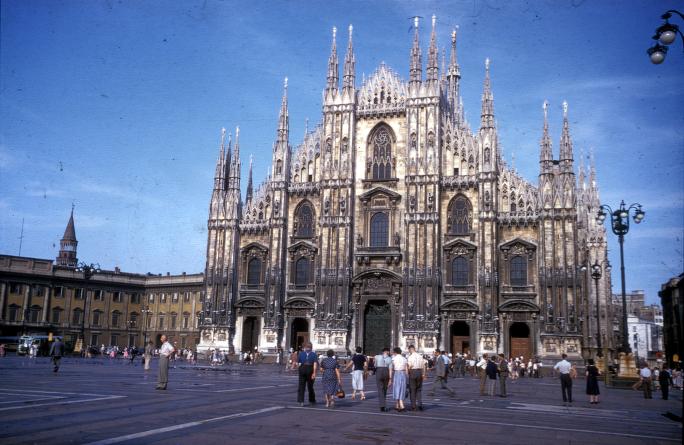
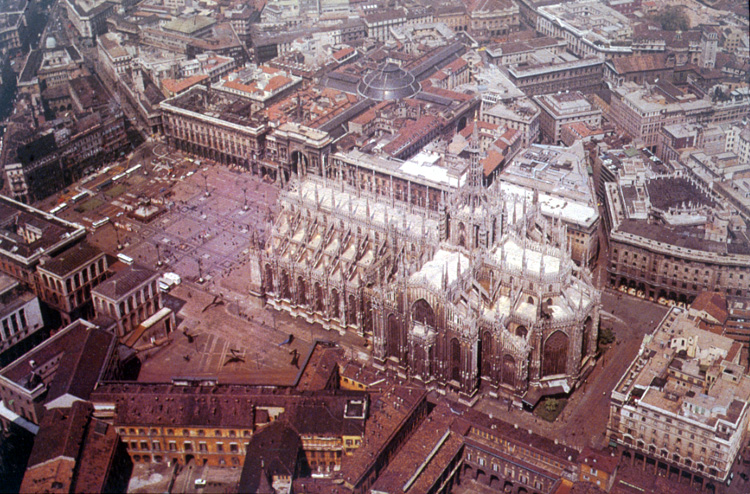
Castello Sforzesco
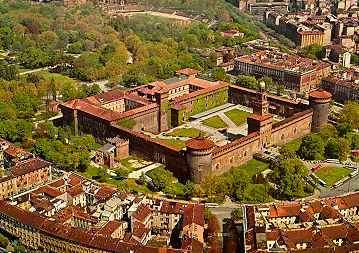
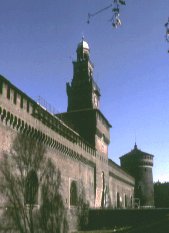
Milan, S. Ambrogio


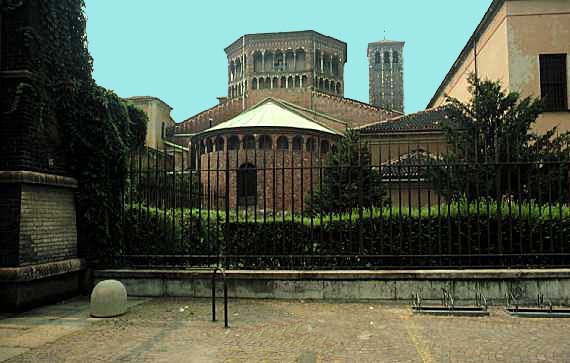
Milan. S. Eustorgio
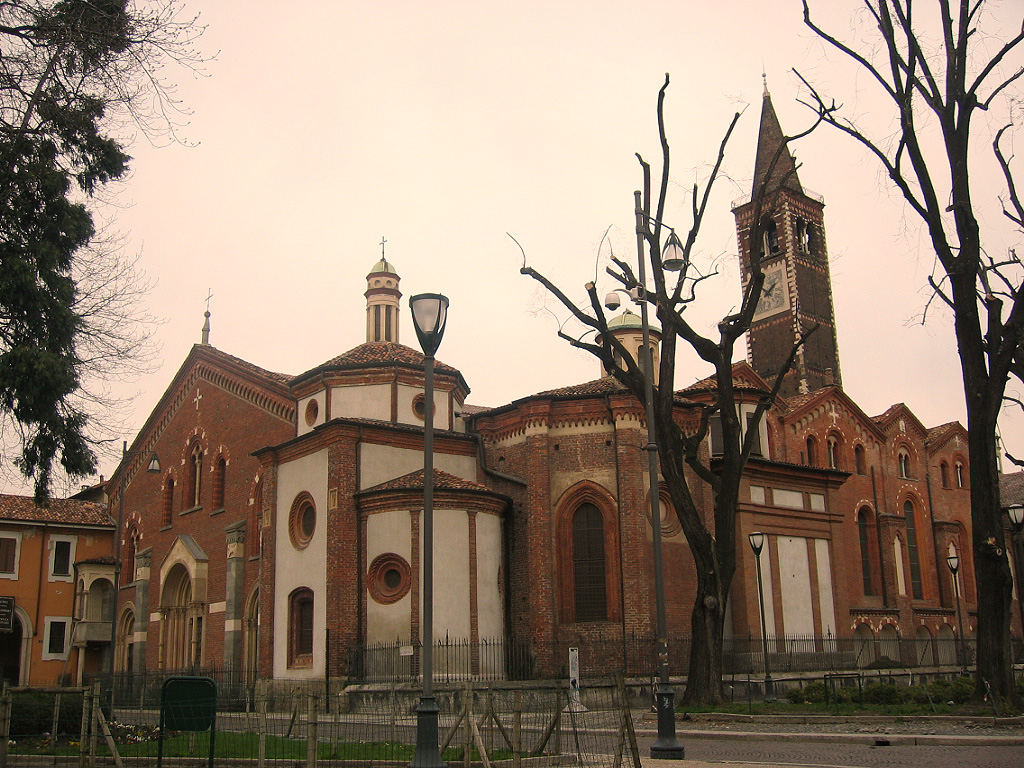
Kingdom of Naples (Anjou) and Sicily (Aragon)
regional contrasts
Naples: patron of early humanists
succession troubles
barons
Change of regime: from Anjou to Aragon
Giovanna II 1414
Alfonso I (of Aragon) 1442-58
Ferrante I 1458-94
regional economy: agriculture, pasturage
Less trade than north
Humanist culture: early, then 15th c.
Alfonso’s court
foreigners: Valla, Manetti, Pontano
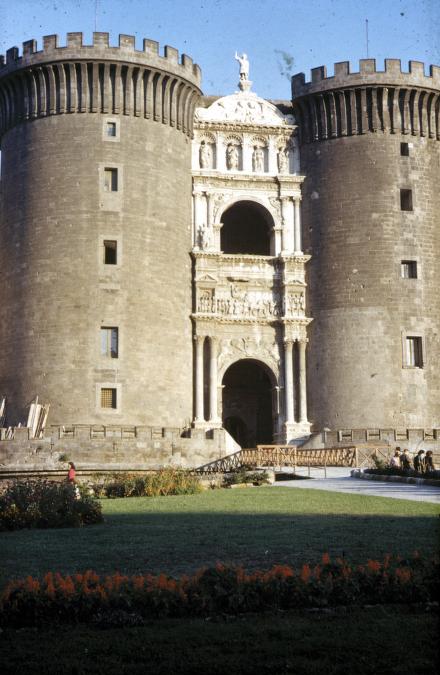
Naples: Castel Nuovo
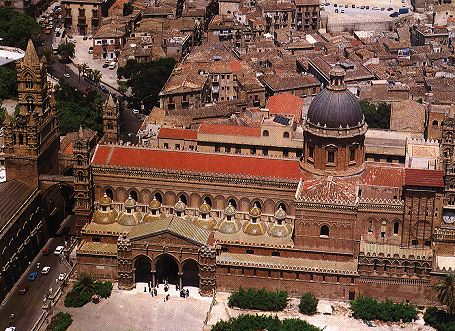
Palermo, Cathedral
Humanist culture in smaller city-states
main centers of patronage: city govt, usually a signore (chanceries)
exceptions: university towns
Padua
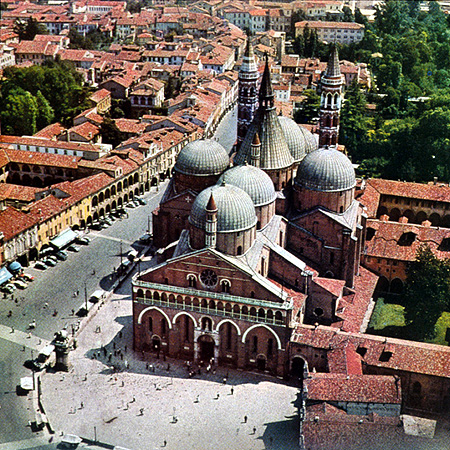
Padua, San Antonio
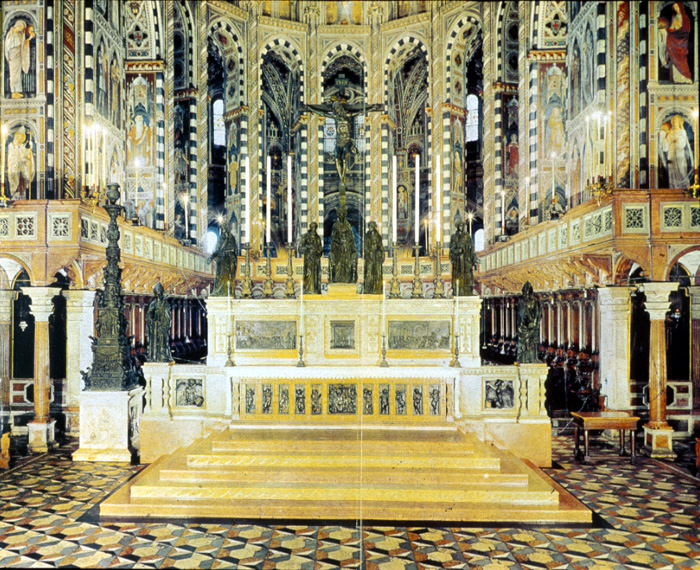
Padua, San Antonio, interior
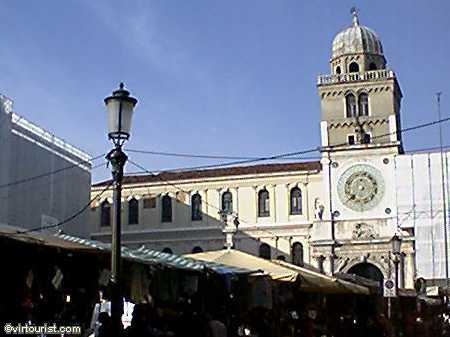
Torre dell’Orologio
Bologna
Pisa
Ferrara, Urbino, Mantua
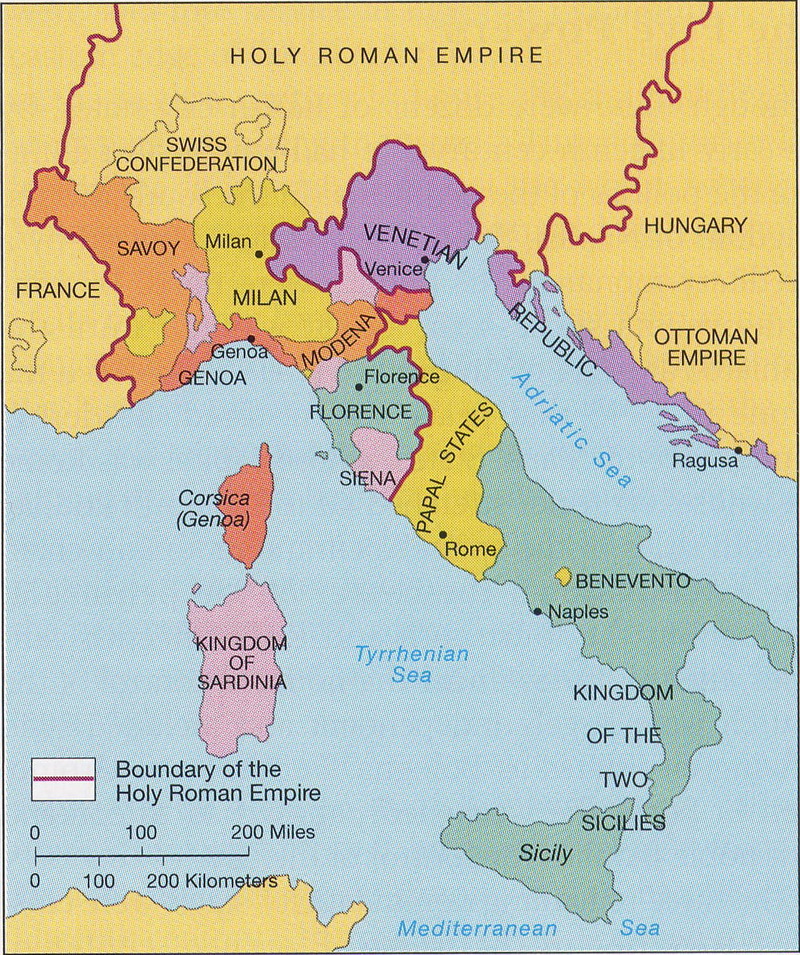
Italy 1494
From crises to stability: Lodi
First part of 15th century: warfare among states
1454 Peace of Lodi: “Italian League”.
recognize status quo, not to wage war, declare peace, or enter into alliances without others; military support; 25 years, renewable
Main powers:
Florence, Venice, Rome, Milan, Naples
Goals of Lodi:
- keep foreign powers (notably France) out of peninsula
- allow for united action against external threats: Turks (1453/Constantinople)
1490s: Alliance breaks
